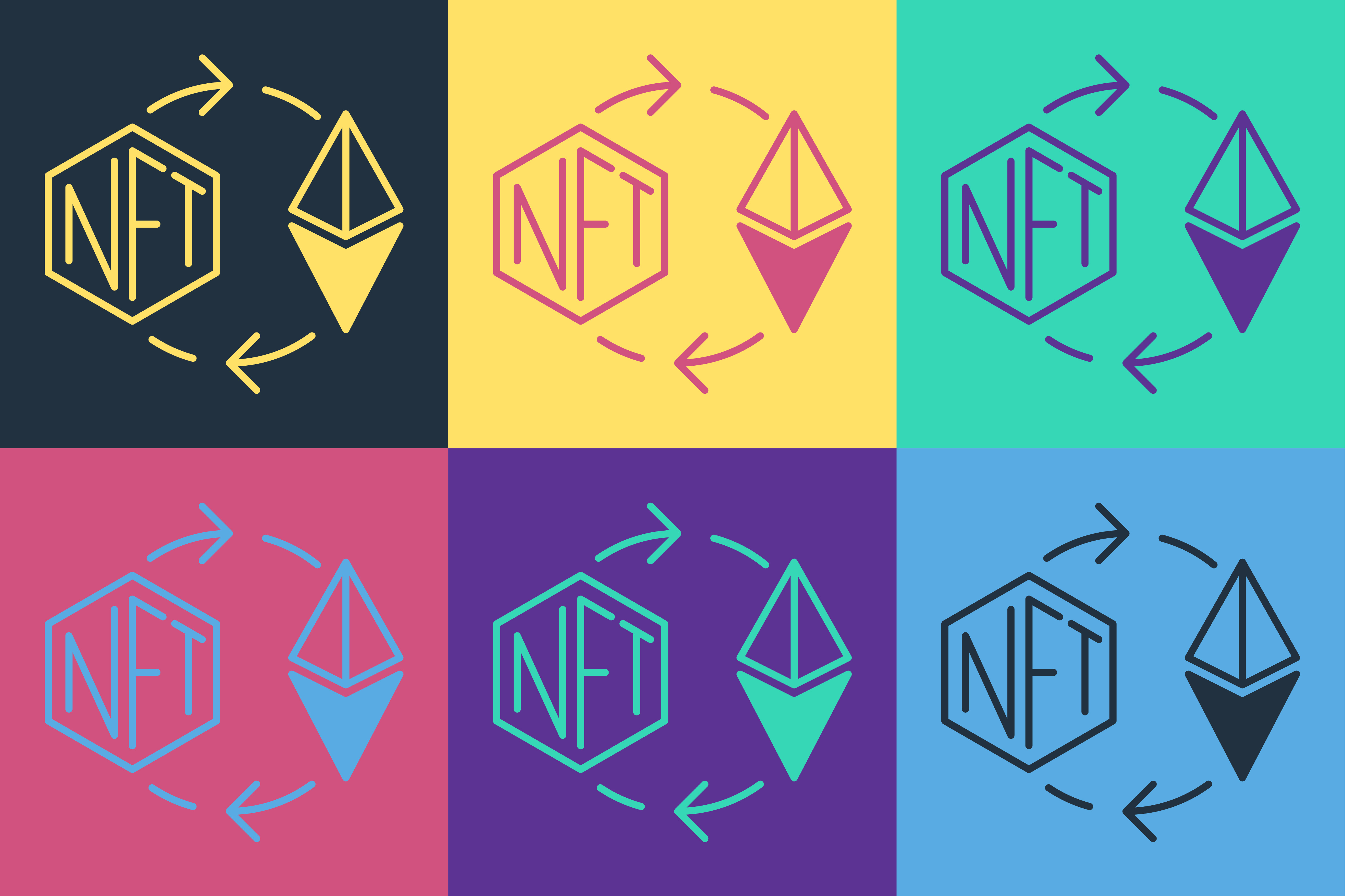What is NFT vs Crypto: Understanding the Key Differences and Similarities
Have you ever wondered, “What is NFT vs Crypto,” and why these terms are revolutionizing the digital world? Navigating the realm of digital assets can be daunting. Terms like ‘cryptocurrency’ and ‘Non-Fungible Tokens’ (NFTs) are often used interchangeably yet represent vastly different concepts. Understanding the distinction between these two is essential to participate in the digital asset marketplace.
This guide aims to demystify the intricate world of NFTs and crypto. We will closely examine the common question – “what is NFT vs crypto?” in language that is simple to understand.
What is cryptocurrency?
What are NFTs?
Are NFTs and crypto the same?
Similarities Between NFT and Crypto
Differences Between NFTs and Crypto
Conclusion

What is cryptocurrency?
Cryptocurrency has become a buzzword in today’s digital age, but what exactly is it? This section aims to provide a clear and concise understanding of cryptocurrency. By understanding crypto, we can lay the foundation for comparing it with NFTs later in our exploration of “what is NFT vs crypto.”
Understanding the Basics of Cryptocurrency
Definition
At its core, cryptocurrency is a type of digital currency that uses cryptography for security. It is decentralized, meaning it operates independently of a central authority or government.
The Role of Blockchain
Cryptocurrencies are powered by blockchain technology. Imagine blockchain as a digital ledger, where every transaction is recorded and verified by a network of computers. This not only ensures security but also promotes transparency in transactions.
Decentralization
Unlike traditional currencies controlled by governments, cryptocurrencies are decentralized. This decentralization is achieved through blockchain technology, which distributes record-keeping across a network of computers.
The Evolution of Crypto
The concept of virtual currency dates back to the late 1980s. But, it wasn’t until Bitcoin was developed in 2009 by an individual (or group of individuals) known as Satoshi Nakamoto that cryptocurrency gained mainstream attention.
Over the years, cryptocurrency adoption has grown exponentially, with numerous cryptocurrencies like Ethereum, Ripple, and Litecoin emerging alongside Bitcoin.
Cryptocurrency in Action
Use Cases
Beyond its original intent as a digital payment system, cryptocurrency now serves various purposes, including investment assets, means for international money transfers, and even as a foundation for other digital applications.
Market Dynamics
The cryptocurrency market is known for its volatility, with prices fluctuating rapidly. This aspect has attracted investors looking for high returns but also implies a certain level of risk.
Understanding cryptocurrency is the first step in grasping the broader concept of digital assets, including cryptocurrencies and NFTs. With this foundation, we can now explore the unique world of NFTs and how they compare and contrast with cryptocurrencies.
Learn more about crypto here – What is cryptocurrency?
What are NFTs?
After exploring the realm of cryptocurrency, it’s time to delve into the world of NFTs, another key player in the digital assets space. This section will provide an understanding of NFTs, which is essential for comprehending the broader theme of “what is NFT vs crypto.”
Defining NFTs
What makes NFTs unique? Unlike cryptocurrencies, NFTs, or Non-Fungible Tokens, are unique digital assets. An NFT represents ownership of a specific item or piece of content.
The term ‘non-fungible’ means that each NFT is distinct and cannot be exchanged on a like-for-like basis, unlike cryptocurrencies where each unit is identical (e.g., one Bitcoin is always equal to another Bitcoin).
Technology Behind NFTs: NFTs also utilize blockchain technology, but in a way that emphasizes the uniqueness and authenticity of each digital asset. This technology ensures that the ownership of an NFT can be precisely tracked and verified.
What is the point of an NFT?
The point of an NFT (Non-Fungible Token) lies in its ability to establish verifiable, exclusive ownership and authenticity of a digital asset using blockchain technology.
Here are the key aspects of what makes NFTs significant:
- Unique Digital Ownership: NFTs provide a digital certificate of ownership for a specific item or piece of content that is unique and cannot be replicated. This is particularly valuable in the digital world where duplication is easy.
- Authenticity and Origin: NFTs ensure the authenticity of a digital asset, enabling the verification of its originality and history of ownership. This is crucial for artists, creators, and collectors.
- Monetization of Digital Art and Content: NFTs allow artists and creators to monetize digital art, music, videos, and other creative work in ways that were not possible before, offering them a new avenue for revenue.
- Collectibility and Investment: Just like collecting rare physical items, NFTs have become a form of digital collectible. People buy and hold them as investments, hoping their value will increase.
- Utility in Various Domains: Beyond art, NFTs are used in diverse fields like virtual real estate, gaming, and as access tokens for events or services, providing utility and interactivity.
- Innovation in Digital Rights and Intellectual Property: NFTs have the potential to revolutionize the management of digital rights and intellectual property, providing a new way to manage and enforce these rights in the digital realm.
In essence, NFTs are reshaping the landscape of digital ownership, authenticity, and the economics of digital content, offering new opportunities for creators and collectors alike in the digital age.
What can NFTs be used for? Examples and Use Cases.
Below are some examples of what NFTs can be used for.
- Digital Art: One of the most prominent uses of NFTs is in the digital art sector, where artists can sell their works as unique digital assets.
- Collectibles and Gaming: NFTs are also popular in collectibles and gaming, where they can represent unique items, characters, or abilities.
- Real Estate and Virtual Spaces: NFTs can also be used to represent ownership of virtual real estate in digital worlds and platforms.
- Other Applications: NFTs are finding applications in various fields, offering a new way to prove ownership of digital goods.
NFTs represent a fascinating aspect of the digital asset world, distinguished by their uniqueness and potential for proving ownership in the digital realm. As we continue to explore “what is NFT vs crypto,” understanding NFTs is crucial in recognizing their impact and how they differ from traditional cryptocurrencies.
Are NFTs and crypto the same?
In a word – no. NFTs and crypto are not the same. That said, there is more to it than that.
Having explored the individual concepts of cryptocurrency and NFTs, it’s now crucial to address the common question at the heart of our discussion – “What is NFT vs Crypto? Are they the same, and if not, how do they differ?
This section will clarify the relationship between NFTs vs crypto.
What is NFT vs Crypto – Similarities Between NFT and Crypto
How are NFTs and cryptocurrency similar? The section below will highlight the common ground shared by NFTs and cryptocurrencies.
Common Foundations in Blockchain Technology
- Blockchain as the Backbone: NFTs and cryptocurrencies are built on blockchain technology. This shared foundation ensures secure, decentralized record-keeping and transaction processing.
- Digital and Decentralized Nature: As digital assets, both NFTs and cryptocurrencies exist in the digital realm and are not controlled by any central authority, unlike traditional currencies or physical assets.
Role in the Digital Economy
- New Digital Financial Tools: NFTs and cryptocurrencies give people and companies new ways to invest money, trade items, and manage their digital wealth.
- Shaping the Digital Marketplace: NFTs and cryptocurrencies are transforming how we do business online. They open up new investment options and change our understanding of what digital items are worth and how they can be traded.
Here’s a table that shows the critical similarities between NFTs and cryptocurrencies.
| Aspect | NFTs | Crypto |
|
Based on Blockchain Technology (Use blockchain technology for security and integrity.) |
Yes | Yes |
|
Digital Assets (Exist exclusively in the digital realm.) |
Yes | Yes |
|
Decentralized Nature (Operate without centralized control, unlike traditional currencies.) |
Yes | Yes (true for most cryptos) |
|
Operate on a Global Scale (Accessible and usable worldwide, transcending traditional geographic boundaries.) |
Yes | Yes |
|
Subject to Market Volatility (Prices can fluctuate widely, influenced by various market factors.) |
Yes | Yes |
|
Potential for High Returns (Offer the possibility of significant financial gains.) |
Yes | Yes |
|
Innovative Investment Opportunities (Represent new and evolving forms of investment not seen in traditional finance.) |
Yes | Yes |
|
Part of the Digital Economy (Integral components of the modern digital financial ecosystem.) |
Yes | Yes |
Now, let’s look at the differences between NFTs and cryptocurrency.
What is NFT vs Crypto – Differences Between NFTs and Crypto
While the previous sections outlined the similarities between NFTs and cryptocurrencies, understanding their differences is equally important to fully grasp the concept of “what is NFT vs crypto.”
This section will outline the fundamental distinctions that set these two digital assets apart.
Nature of the Assets: Fungibility vs. Non-Fungibility
- Fungibility of Cryptocurrencies: Cryptocurrencies are fungible, meaning each unit (like a Bitcoin or Ethereum) is identical and interchangeable with another unit of the same cryptocurrency.
- Non-Fungibility of NFTs: NFTs are unique, with each token representing a specific, non-interchangeable asset. This uniqueness distinguishes NFTs from cryptocurrencies and gives them their name – Non-Fungible Tokens.
Usage and Applications
- Cryptocurrencies as Digital Money: Cryptocurrencies are primarily used as a digital form of money, for transactions, investments, and as a store of value.
- NFTs as Digital Certificates: NFTs represent ownership of a specific item or content, ranging from digital art to virtual real estate. They are used to authenticate and transfer ownership of these unique digital assets.
Market Dynamics and Value Determination
- Value Stability in Cryptocurrencies: Cryptocurrencies, while volatile, have a more standardized value determination based on market supply and demand.
- Subjective Value of NFTs: The value of an NFT is highly subjective, often influenced by factors such as the creator’s reputation, uniqueness of the asset, and current trends in the digital art and collectibles market.
Here’s a table highlighting the key differences between NFTs and cryptocurrencies.
| Aspect | NFTs | Crypto |
| Fungibility | Non-fungible (unique and not interchangeable). | Fungible (interchangeable units). |
| Primary Use | Representing ownership of unique digital items (art, collectibles, virtual real estate). | Used as digital money for transactions and investments. |
| Value Determination | Subjective and based on factors like rarity, demand, and the creator’s reputation. | More standardized, based on market supply and demand. |
| Underlying Technology | Blockchain-based, emphasizing uniqueness and ownership. | Blockchain-based, emphasizing security and transaction efficiency. |
| Market Dynamics | Highly variable, influenced by trends, collector interest, and uniqueness. | Subject to market volatility, impacted by global economic factors and investor sentiment. |
Conclusion – The Evolving Landscape of NFTs and Cryptocurrencies
Understanding the nuances of NFTs and cryptocurrencies is crucial in today’s digital age. As we have seen, while they share some similarities, they also possess distinct characteristics that cater to different needs and opportunities in the digital economy.
As we wrap up our exploration of “what is NFT vs crypto,” let’s reflect on the key insights gained.
Recap of Major Insights
Defining Characteristics: Cryptocurrencies are digital or virtual currencies that use cryptography and are typically fungible. NFTs, or Non-Fungible Tokens, represent unique digital assets, each with its distinct value and purpose.
Technological Foundation: NFTs and cryptocurrencies are built on blockchain technology, ensuring security, transparency, and decentralization.
Diverse Applications: While cryptocurrencies are primarily used as digital money, NFTs have various applications, including digital art, gaming, collectibles, and more.
More Helpful Crypto Content
Understanding Leverage Trading in Crypto: How to Amplify Your Gains (+Possible Risks)
Learn what leverage trading crypto is and how it works. Plus, the top exchanges for leverage trading crypto.
3 NFT Smart Contract Examples (Solidity, Vyper and Rust) + What Each Function Means
Explore 3 NFT smart contract examples (in Solidity, Vyper, and Rust) and learn what each function in the code does.
Demystifying NFT Smart Contracts: What They Are and Why They Matter
Feeling lost in the world of NFTs and smart contracts? Don’t worry! We’ll break down everything you need to know about NFT smart contracts.



